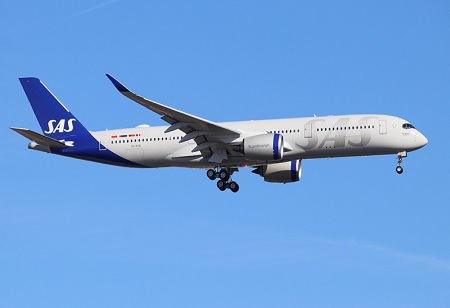
Sweden Eyes Collaboration with India on Sustainable Aviation Solutions

 Expressing a desire for closer ties with India, Sweden is seeking collaboration on sustainable solutions in aviation and efforts related to electrification in the automotive sector. Johan Davidson, Sweden's State Secretary for Infrastructure and Housing, emphasized the importance of India as a partner, being the world's fastest-growing aviation market. He also expressed hope for the revival of direct flight services between the two countries, acknowledging India's substantial investments in airport and aviation expansion. Davidson highlighted significant interest in India's growth, presenting new business opportunities for Swedish companies.
Expressing a desire for closer ties with India, Sweden is seeking collaboration on sustainable solutions in aviation and efforts related to electrification in the automotive sector. Johan Davidson, Sweden's State Secretary for Infrastructure and Housing, emphasized the importance of India as a partner, being the world's fastest-growing aviation market. He also expressed hope for the revival of direct flight services between the two countries, acknowledging India's substantial investments in airport and aviation expansion. Davidson highlighted significant interest in India's growth, presenting new business opportunities for Swedish companies.
Sweden, a key player in sustainable aviation, boasts over 80 active companies in the sector with global expertise and a track record of implementing solutions. State Secretary Johan Davidson, during his recent visit to India, expressed Sweden's eagerness to collaborate on sustainability in aviation and auto sector electrification. He highlighted the potential contributions of Swedish companies to India's green transition in aviation. Davidson emphasized the hope for a new direct flight between India and Sweden, citing the significant Indian population in Sweden as a driving factor for increased tourism, business, and regular exchanges.
Regarding sustainability in aviation, with a focus on Sustainable Aviation Fuel (SAF), Davidson affirmed Sweden's openness to cooperation with India in this area. Acknowledging global efforts to reduce carbon intensity in aviation fuels by 5% by 2030, Davidson confirmed Sweden's interest in being part of India's transition through SAF. In December 2023, the International Air Transport Association (IATA) projected a rise in SAF production to 1.875 billion litres in 2024, presenting ample opportunities for collaboration and production. Hemant Mistry of IATA previously noted the significant potential for SAF production, highlighting pent-up capacity for feedstock and a promising opportunity for SAF manufacturing.

